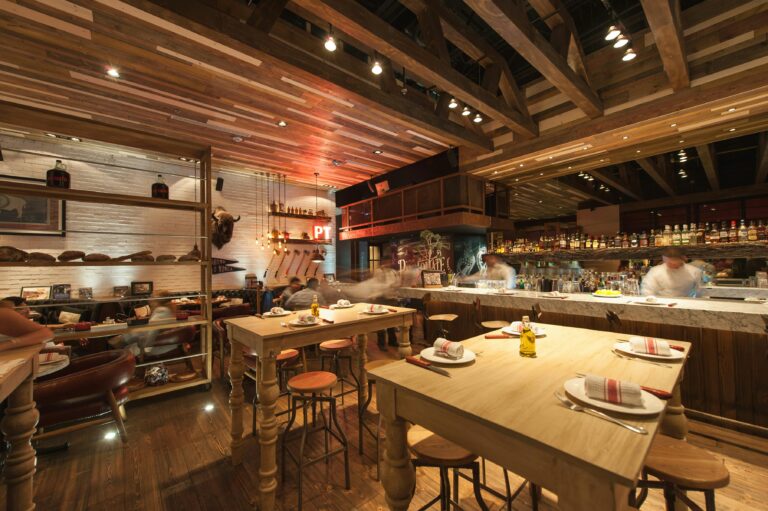Five Tips for Outstanding Cafe and Restaurant Design
(StLouisRestaurantReview) Designing and decorating a restaurant starts with a basic understanding of architectural harmony and color schemes, but there’s much more involved. Effective restaurant design plays a key role in marketing. Thoughtful design choices can strengthen your restaurant’s concept, boost sales, and elevate your brand. A well-designed space should enrich the dining experience, leaving guests eager to return for both the cuisine and the atmosphere.
Color
Both researchers and advertisers recognize how deeply color influences our minds. It triggers subconscious reactions that can be surprisingly strong. For example, in the restaurant industry, red is often a popular selection because it has been shown to stimulate appetite. McDonald’s is a prime example of this, weaving red into their logo and interior design.
Now, think about the color blue. While it’s known for its soothing effect and works well in spaces like bathrooms or bedrooms where relaxation is key, it’s not ideal for restaurants. Blue can actually reduce metabolism and dampen appetite. When designing a restaurant, it’s worth considering that your personal favorite color may not necessarily align with what’s best for the business.
Design
Every design element and detail should reflect and enhance your style and theme. For instance, the décor in a quick-service fast-food spot will vastly differ from that of an upscale fine dining establishment.
Restaurant design concepts can vary greatly, from minimalist or exotic styles to unique themes, such as a casino-themed restaurant. I-5 Design restaurant build teams ensure that the design concept is consistent throughout all elements of the space, creating a cohesive and immersive experience for guests.
Lighting
Lighting plays a crucial role in restaurant design, shaping the atmosphere and overall experience. Thoughtfully positioned lighting can draw attention to unique architectural details, brighten inviting seating areas, or discreetly mask imperfections.
Smaller pendant lights over tables create an intimate and romantic ambiance, while larger overhead fixtures make a space feel more open and airy. Given how essential lighting is to the design process, it’s a smart move to consult a lighting expert if you lack professional experience in this area.
Seating Spacing
Finding the right balance between seating enough guests to remain profitable and ensuring everyone feels at ease is essential. Ensure that both staff and customers can move around the restaurant without struggling to weave through tightly packed tables.
For instance, fine dining establishments often space tables farther apart to create a private, relaxed atmosphere that encourages diners to stay longer and spend more. On the other hand, fast-casual eateries can position tables closer together since patrons typically spend less time dining.
Branding
Branding and interior design complement each other, with interior design playing a key role in strengthening your brand. To make your brand distinctive, elements like color, typography, and layout should be carefully chosen.
Creating subtle links across details such as signage, menus, logos, and even apron designs helps tie the interior design to your branding. This approach builds a cohesive and well-defined brand identity.
Endnote
A thoughtfully designed interior is a lasting asset to your business. Keep up with current trends and customer preferences to ensure your restaurant or café stays welcoming and thrives in the dynamic culinary world.
